Content
- 1 Perennial care: light and temperature
- 2 Cultivation of mesophytes, xerophytes, hydrophytes and hygrophytes
- 3 Soil for planting and caring for perennial flowers
- 4 Features of growing perennial flowers and plants in the country
- 5 Choosing perennial flowers for a summer residence
- 6 Compatibility
- 7 Bright flower bed
- 8 Photo review of perennial flowers from the 2017 catalog
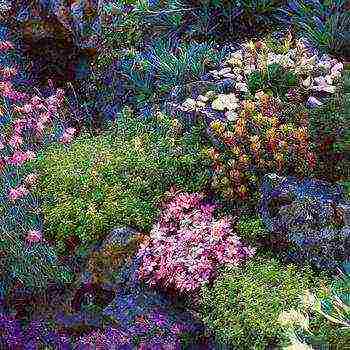 Perennials are herbaceous ornamental plants that overwinter in the open field. When growing perennial flowers, some types of plants still require shelter before the onset of the cold season. Also, when caring for perennials, other conditions must be observed regarding the requirements for light, moisture and soil composition. Using the necessary recommendations, you can turn your garden into a beautiful blooming oasis.
Perennials are herbaceous ornamental plants that overwinter in the open field. When growing perennial flowers, some types of plants still require shelter before the onset of the cold season. Also, when caring for perennials, other conditions must be observed regarding the requirements for light, moisture and soil composition. Using the necessary recommendations, you can turn your garden into a beautiful blooming oasis.
There are three important factors to consider when planting and caring for perennial flowers.
1. The shadow is different.
2. Water, but do not water.
3. "Native" soil for each plant.
Nature is so diverse that you can find the most unusual forms of plants with amazing properties in it. The task of a good gardener, based on knowledge of the natural characteristics of plants, is to choose from a huge variety of species suitable for himself. Therefore, knowledge of the ecological characteristics of the grown plants is the first commandment of the grower.
It has long been known that the life of a plant is determined by five environmental factors: light, heat, water, nutrition and soil oxygen.
The first thing a gardener pays attention to when growing perennials is the selection for central Russia of sufficiently winter-hardy plants that do not need a special shelter for the winter.
Very attractive, but, unfortunately, thermophilic plants, dahlias and gladioli, the gardener is forced to dig up and store in a warm place in the fall.
Some plants grow well only if the gardener provides them with the required conditions. For example, alpine edelweiss - a kind of coat of arms of the high mountains of the Alps - grows well in the Moscow region, but only on calcareous stony soils; perovskia needs a thick layer of sand. Goniolimon prefers sunny rocky places. And in contrast, Jeffersonia and leaf fern grow better in deep shade. Trilliums need deep shade and forest soils.
Perennial care: light and temperature
Plants are the children of the Sun. Only the sun's rays, their energy allow plants to exist. However, there are species, usually forest species, that grow and bloom normally even in deep shade. That is, nature is so diverse that you can find everything that is interesting to a gardener in it. In relation to light, three groups of plants are distinguished.
When caring for perennial flowers, remember that light-loving plants cannot tolerate even light shading. As a rule, these are inhabitants of deserts, steppes (tulips, irises, etc.), meadows (cornflowers, geraniums, cornflowers) and rocks (sedum, saxifrage, etc.).

Shade-tolerant can grow both in the sun and in partial shade. They came to our gardens from rare forests, from forest glades and edges (lilies, phlox, daylilies, etc.).
Shade-loving people do not feel well in bright sunlight. These are inhabitants of closed oak forests and deaf spruce forests (hoof, kupen, anemone, trillium, most ferns, etc.).
Even from this very approximate division it is clear that both shade-tolerant and shade-loving plants can grow in the shade. But the shadow is different.
A dense, dense shade on a regular garden plot is under the canopy of old, often planted apple trees; on the north side of such dense, large bushes as chokeberry, Hungarian lilac, irgi, hawthorn and conifers; on the north side of tall buildings, where the direct rays of the sun never fall. In such places, not only is there little light, but a specific microclimate is also created, that is, in summer there are less daily temperature drops, higher air humidity compared to sunny areas. And in winter there is always more snow and it melts slowly. It is these conditions that favor the growth and flowering of such shade-loving plants.
A light shadow is formed under the canopy of trees with a sparse, openwork crown, such as rowan, sea buckthorn, cherry. Non-flowering bulbous plants (tulips, hazel grouses, daffodils, muscari, crocuses), long-rooted doronicums (eastern doronicum, plantain doronicum), evergreen ground cover: spring omphalodes, periwinkle, bush valdsteinia gravillate and anemicacea, tosweet anium On wet, peaty soils, always - both in spring, during flowering, and in summer, when large leaves grow on it, Kamchatka lysichiton surprises and delights. But the most familiar, never annoying sight is a blooming forest forget-me-not.
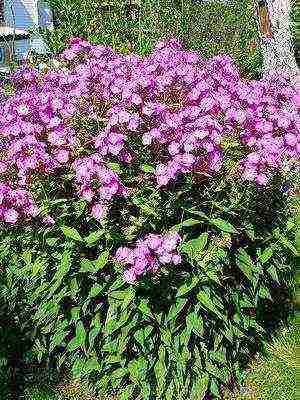

Lilies (especially species), paniculata phlox, blood-red geraniums, ozhikovidnaya are effective in the light shade of lilies (especially species).
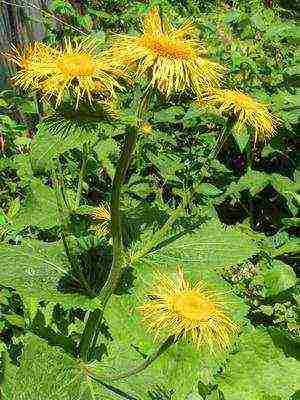
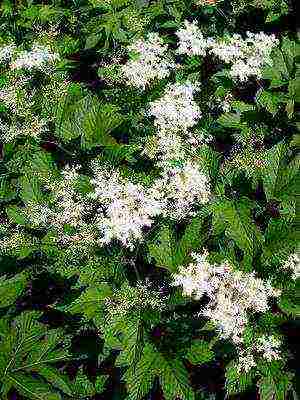
Rogers can become a highlight of flower beds in light shade, and from tall plants - magnificent elecampane and Kamchatka meadowsweet. If possible, it is worth decorating the garden with such amazing plants as ostrich and onoclea. Penumbra occurs in areas from both the eastern and western sides of buildings and along the edges. Here, the sun's rays hit the plants either in the morning (which is more favorable) or in the afternoon. Microclimatic conditions in light shade and partial shade differ little from those in open spaces, but the daily temperature fluctuations are smoothed here. Perhaps, for many flower cultures, especially shade-tolerant ones, it is in partial shade that the most comfortable conditions are formed: astilbe, lilies and phloxes, liatrices, primroses and daisies, hosts and aquilegia, dicenters, daylilies and bathing suits - this is an incomplete list of crops that grow well in partial shade. Interesting and little-known, but stable in our climate culture - soft cuff, large-flowered rank.
Thus, the shade is not at all extreme conditions for flower crops, you just need to think over and choose the right assortment of them.
For plants, not only the amount of light is important, but also the ratio of dark and light time of the day (photoperiodism). According to this indicator, they are divided into three groups:
- short-day plants (chrysanthemums, shrubby asters and Italian) are from the southern regions, therefore they bloom in autumn during a short day;
- long-day plants native to the northern regions;
- neutral - most of them come from forests.
The air and soil temperature during the care and cultivation of perennials has a significant effect on the life of plants, since metabolic processes occur only under certain temperature conditions.
Cultivation of mesophytes, xerophytes, hydrophytes and hygrophytes
Water plays a decisive role in the life of plants, because they are 90% water. According to the need for water, plants are divided into four large groups. Hydrophytes, or aquatic plants, only grow in water. Hygrophytes, or moisture-loving plants of wet habitats, need constant excess moisture in the soil - these are types of wet meadows, shores of water bodies. The types of different groups differ visually well. So, in moisture-loving and temperate species, the leaf blade is thin, without pubescence; the root system is superficial, extensive, often with long rhizomes or stolons (anemone, tiarka, zelenchuk, etc.).
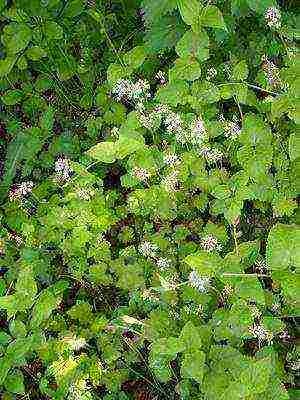

Moderately hygrophilous (mesophytes) - Plants of habitats with moderate soil moisture, these include most species growing in forests, in mountainous and dry meadows. Most of the species and varieties that successfully grow in flower beds in central Russia belong to the group of mesophytes, that is, they have a moderate need for moisture.
In nature, they live in places with normal soil moisture, that is, they are plants of forests and meadows. They are diverse in the type of root systems: in the former, the roots are superficial, weak; the latter have powerful, deep ones. Leaves are varied, but, as a rule, they are thin, green, without pubescence. There are many transitional forms, both to hygrophytes and xerophytes. So, tulips during the growing season and flowering need good moisture, but they do not tolerate excess moisture at the end of the growing season, especially in summer during the dormant period. And there are many such examples.
Sukolyuby (xerophytes) may have succulent leaves (stonecrop, rejuvenated) or thorny (morine, bluehead), densely pubescent (woolly purse), leathery (thyme) or narrow, tough (feather grass). Their roots are often deep, pivotal (kachim, kermek) or fibrous (feather grass). There are many transitional forms in this group, therefore only the most drought-resistant plants are indicated in the list below. An example of drought-resistant plants are the species that are popularly called "tumbleweed" (goniolimon, katran, kachim, kermek).
When growing perennial plants, keep in mind that xerophytes, or dry lovers, prefer dry places, they do not tolerate excessive moisture, they need well-drained light soils, since they came to culture from deserts, steppes, from dry rocks. Transitional types are also distinguished: hygromesophytes, xeromesophytes, etc.
Aquatic plants (hydrophytes). Most aquatic plants attached to the ground have a strong root system (egg capsule, water lily), while floating plants have almost no roots. Most of them reproduce mainly vegetatively, including by winter buds "turions", which fall to the bottom until spring. After their formation, the mother plant dies off. Difficulty is characteristic, when floating leaves differ sharply from submerged ones. For example, in the water buttercup, the emergent leaves are whole, and the submerged ones are dissected into small lobes.
The best place for aquatic and coastal plants is a natural pond with constant water supply from a stream or spring. But they are increasingly using mini-reservoirs. Aquatic plants are planted in barrels (barrels should be lined with waterproof cloth), troughs, ceramic containers, which decorate your garden all summer long.
Moisture-loving plants (hygrophytes). In nature, they occupy a habitat with excess moisture in the soil (the banks of reservoirs, floodplains, ravine bottoms, etc.).
Usually they have a dense, fibrous root system, large soft leaves, among them there are many tall plants.
Soil for planting and caring for perennial flowers
 When growing perennial flowers in the country, the most important condition is the compliance of their ecological needs with the conditions of the planting site. No gardener in the open field can change the length of the day, the seasonal dynamics of temperature and humidity. But there is an important factor in the life of plants that is available for regulation - this is soil conditions. Soil is rated mainly by two characteristics:
When growing perennial flowers in the country, the most important condition is the compliance of their ecological needs with the conditions of the planting site. No gardener in the open field can change the length of the day, the seasonal dynamics of temperature and humidity. But there is an important factor in the life of plants that is available for regulation - this is soil conditions. Soil is rated mainly by two characteristics:
Soil physics: density, porosity and texture (clay, loam, sand)
Soil chemistry: the presence of elements necessary for plant nutrition - phosphorus, nitrogen, potassium and trace elements; salinity and acidity of the soil.
The chemical composition of the soil can be changed by the application of fertilizers and lime; physical - by adding sand, humus, peat. The concept of "garden soil" implies averaged indicators, that is, it is a neutral loamy rich soil. An important ecological factor that largely determines the vital activity of plants is the normal air capacity of the soil. This indicator is determined visually.Loose sandy loam, loamy soils are always enriched with oxygen, which allows plant roots to absorb nutrients normally. In compacted soils, and especially overconsolidated soils, there is little oxygen, anaerobic processes take place (i.e., without oxygen), harmful microflora develops, and the activity of feeding roots is hampered. Practically among cultivated plants, species that grow well on overcompacted clay soils are rare. Most of them have a fibrous root system and are moisture-loving. An important indicator of soil quality is its acidity. Soils are classified as acidic (pH less than 6); neutral (pH = 6-7) and alkaline (pH greater than 7).
Most ornamental plants grow well in ordinary garden soils. But a number of cultures need specific conditions.
So, in relation to acidity, calcephilous plants are distinguished ("loving" lime - pH 7-8). But a number of plants do not react well to excess lime, they grow well on acidic soils.
The ratio of plants to soil salinity has become very important when selecting them for cultivation in urban conditions. It is known that the soil substrate of cities contains a large amount of harmful salts. Plants that carry excess salts in the soil are called halophytes. And although such plants are rarely cultivated, a number of species can still be noted that grow normally with a slight excess of salts. As a rule, these are plants of steppes, semi-deserts, sea coasts: asters (Italian, shrub, New England, New Belgian), cornflowers (steppe), goniolimon, goldenrod, irises (low species), katran, swing, kermek, feather grass, lichnis, mertensia, fescue, sedum, wormwood.
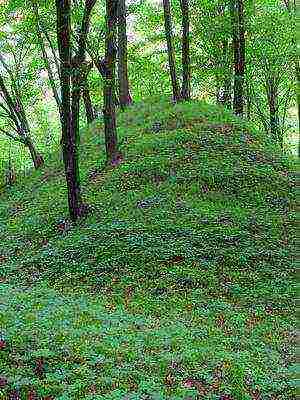
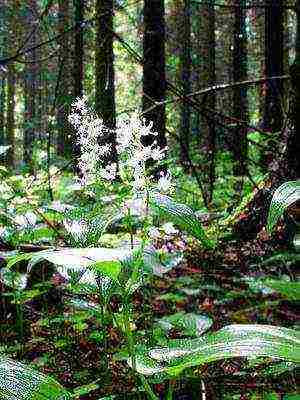
Forest soils. A certain group is made up of plants that grow well on forest soils. Typical forest soils are characterized by high porosity, moderate fertility, shallow and high microbial content. Plants of forest soils do not like organic fertilizers (especially manure) and mineral fertilizers. They are satisfied with natural, not enriched forest soils, while the main thing is to preserve deciduous tree litter in autumn. Such litter will protect the soil from severe freezing, overdrying, and wind erosion. In the spring, after rotting, nutrients and organic matter will enter the soil along with it. Deciduous litter, albeit not perfect, but still an imitation of forest litter, the main guardian of forest soil fertility: the vital activity field of useful soil organisms is the place where most of the roots of forest plants are located. By ensuring the annual preservation of fallen leaves from trees, the gardener will create favorable conditions for the growth of a whole group of plants that need forest soils.
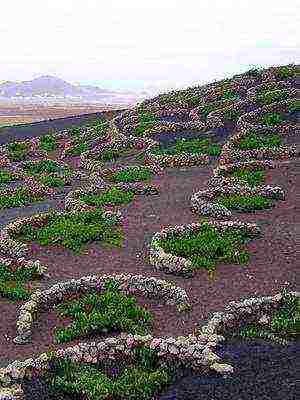

Stony soils. A special group is made up of petrophytes, that is, plants that grow well on stony soils, talus, and rocks. Most of them have their origins in the mountains. In recent years, in connection with the massive creation of rockeries, gravel gardens and similar plantings, a fascination with such plants has begun. These are mainly drought-resistant plants that form cushions, sods, and individual bushes. The root system is pivotal, deeply penetrating between stones (beetroot, gerbil, etc.), often root-sprouting (oriental poppy, evening evening primrose). Bulbous ones are found among petrophytes (karatavsky onion, crocus, etc.).
Below you can see a photo of planting and caring for perennials in the garden:
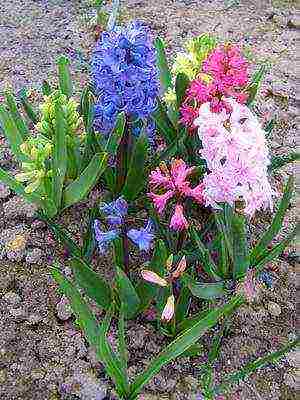

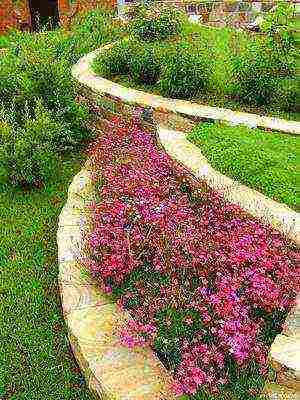
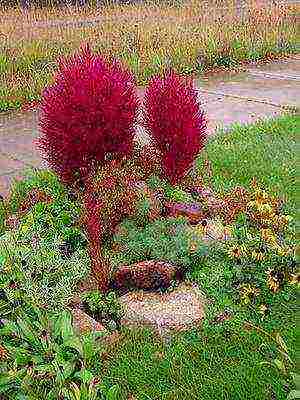
Features of growing perennial flowers and plants in the country
For busy people who do not have the opportunity to spend a lot of time caring for flower beds, we advise you to limit yourself to growing common crops, and for amateur flower growers, you can recommend a wider range of species of floral plants, including new crops developed by the country's leading botanists.
One of the features of growing perennial plants is that you cannot argue with nature. You need to plant only those plants that will grow exactly on your site, and not just fashionable or outwardly liked species.After all, every gardener knows that weakened, sick, poorly growing plants cannot be beautiful and do not create a good "carpet".
Many wild plants can be relocated to the country, but you must follow the rules that will not harm nature.
1. You should never dig out plants where there are few of them. You should find thickets and spots of ferns, from where you can take one or two plants.
2. It is better to dig up young plants.
3. It is better to take plants from nature in the second half of summer. They can be clearly seen at this time, not like in the spring, when the leaves have not yet unfolded.
4. Not recommended: dig up single specimens (these may be rare species), replant plants later than August (they may not have time to take root before winter); take a large number of copies.
Remember: if a plant is capable of forming a thicket, it will form it in two to three years. And if it grows as a separate bush, then in the flower garden it should be single, tapeworm plantings.

Daylilies planting and care in the open field
Cultivation of a daylily. Since the 20th century, various varieties of hybrid daylily have become a decoration of all gardens on the planet. Previously, it was possible to see the wild relatives of the red or yellow daylily under almost every window near the houses of villagers. It was a familiar perennial, simple and, it seems, eternal ...
More details
- Views:
- Comments:

Gerbera garden planting and care
Gerbera is a beautiful perennial flower of the Asteraceae family, native to Africa. The petals are painted in different colors from light tones to deeply saturated shades. Garden gerbera needs fertile land, moderate watering and sufficiently good illumination. The flower can be ordinary and double, has powerful roots, and the fruits ...
More details
- Views:
- Comments:
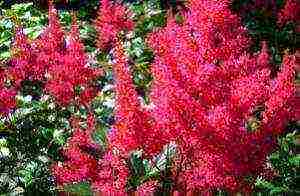
Astilba planting and care in the open field
Herbaceous astilba is classified by experts in the saxifrage family. Its homeland is considered to be the eastern regions of Asia (however, some researchers call the American continent the native places of the plant). Today, there are about 400 varieties of this plant in the world. The most common among gardeners are the following ...
More details
- Views:
- Comments:
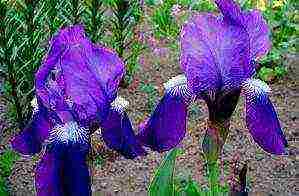
Iris bearded planting and care
Bearded irises are lovers of heat and bright sun. According to legend, these beautiful flowers grew on the site of a rainbow that flashed all over the earth when Prometheus gave people fire. This vibrant flower has 700 different species and countless shapes and shades ...
More details
- Views:
- Comments:

Coreopsis perennial
Coreopsis is a herbaceous plant. "Yellow daisy" has straight long stems, reaching a height of 30-110 cm. The flowers of coreopsis are rather large, the diameter of which is 6 cm. Bright double inflorescences-baskets ...
More details
- Views:
- Comments:

Hyacinth planting and care in the open field
Have you ever seen multicolored stars descend to the ground? If not, then you should plant flowers of wondrous beauty in your garden, the name of which is Hyacinths. It is these delightful and at the same time completely unassuming flower plants that can become a real decoration of the garden and a healer of the soul from all kinds ...
More details
- Views:
- Comments:
Any summer resident wants his site to smell sweet all summer. We suggest taking a closer look at perennials. Whether they will delight the entire flowering period depends on where they are planted (in the shade or in the sun), in which land (dry, wet, sandy or clayey), as well as on compatibility with each other.
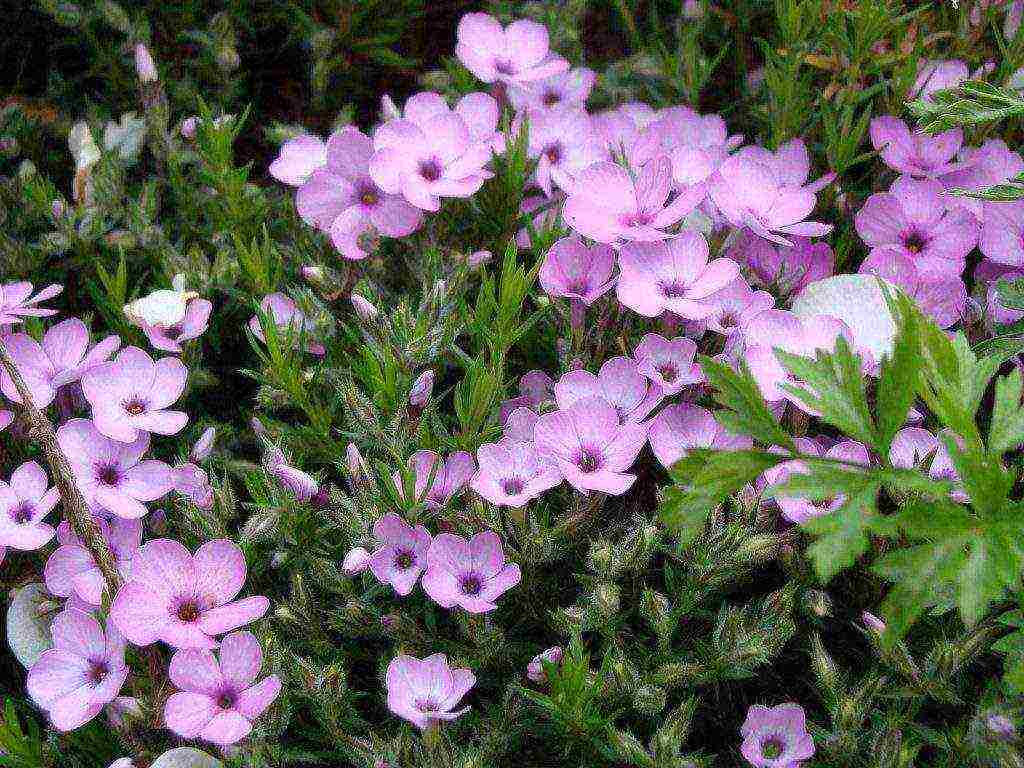
Choosing perennial flowers for a summer residence
There are several conditions for a favorable stay of plants, they all prefer different weather, lighting, humidity. Based on these parameters, you need to choose and plant perennial flowers.
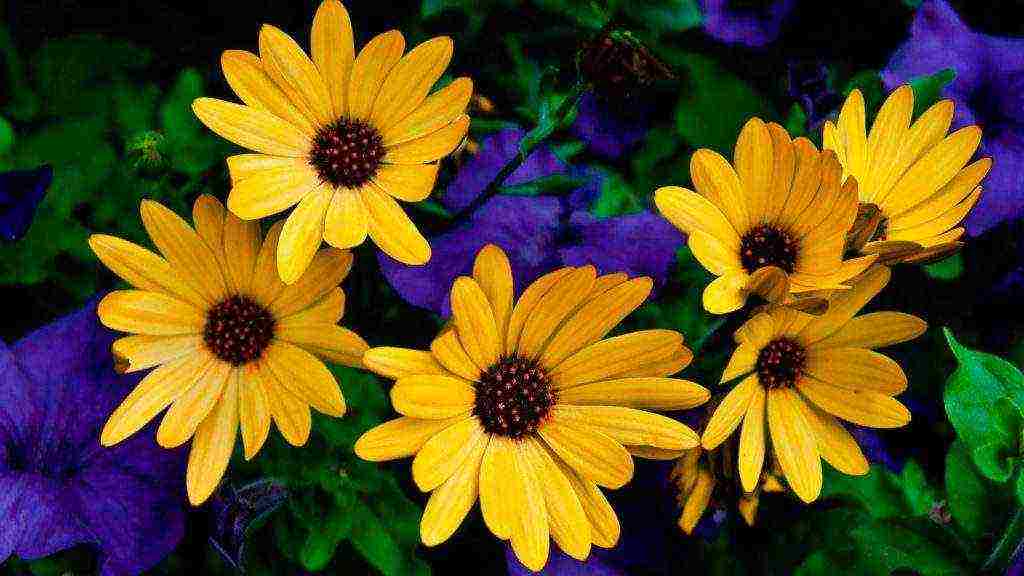
By illumination level:
- in an area of high solar activity (more than 6 hours), plant light-loving asters, peonies, poppies, phlox;
- iris, aquilegia, primrose love less light (4-2 hours);
- fern and lilies of the valley will take root well in the shade.
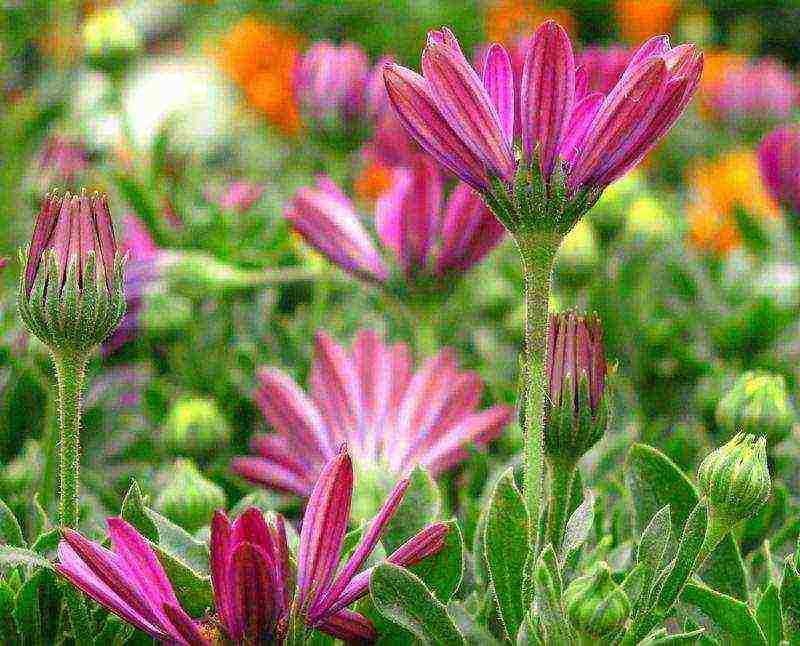
According to the characteristics of the soil:
- Fertilized black earth is suitable for bell, lupine, mallow;
- clay and sandy base is good for unpretentious flax, valerian, sage;
- asters and yarrow prefer moist soil;
- phlox, carnation and goldenrod can go without water for a long time.
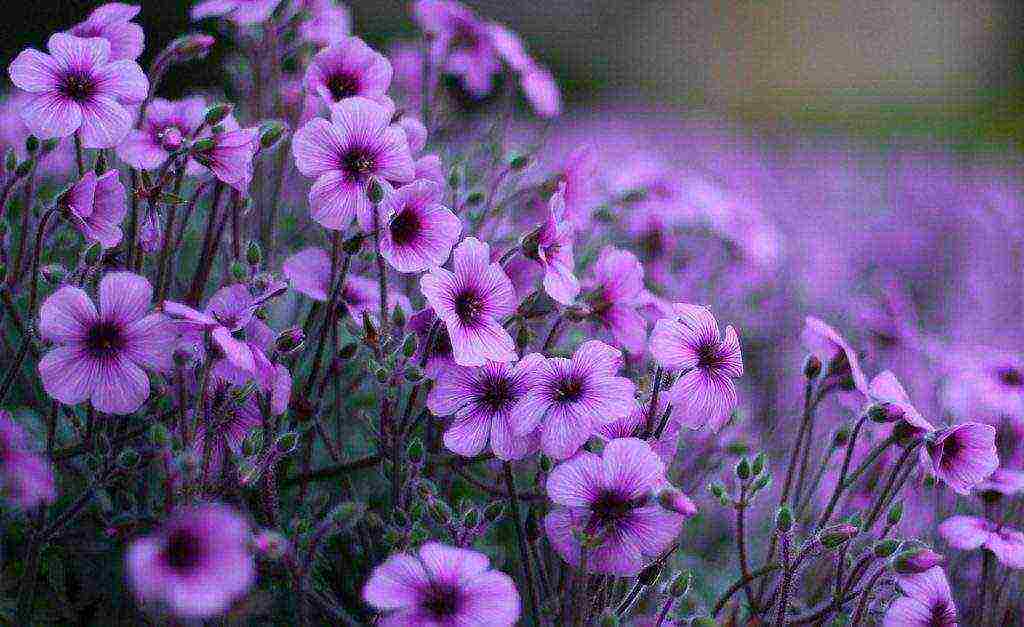
Compatibility
Sometimes it is not clear why the gifts of flora do not bloom for a long time or do not take root at all. It depends on both the light, moisture, type of soil, amount of fertilizer, and compatibility. Not all plants, like people, are friends and get along with each other.

- the rose is well adjacent to peonies, gypsophila, strawberries and lavender;
- fern and lilies of the valley complement each other perfectly;
- it is better to plant dahlias separately from the rest, only marigolds can withstand them, since they are one of the most unpretentious;
- Buttercup families love moisture and take a lot of nutrients from the soil, so you need to place them in a separate flower bed.
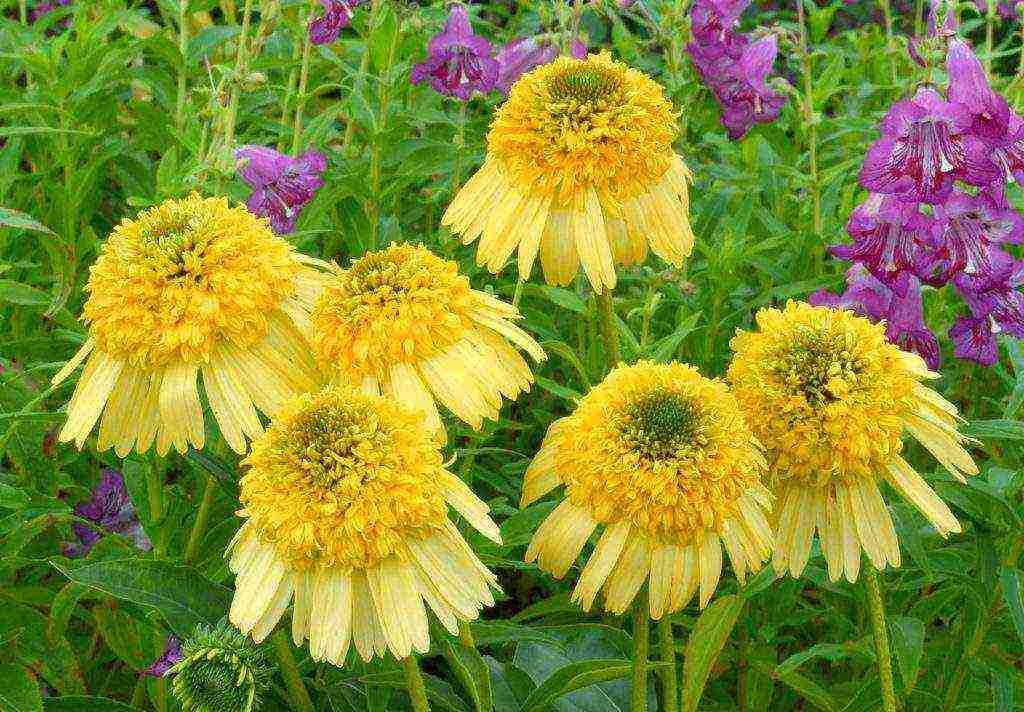
It is good to plant herbs next to perennials, as well as marigolds and sage to protect against pests.
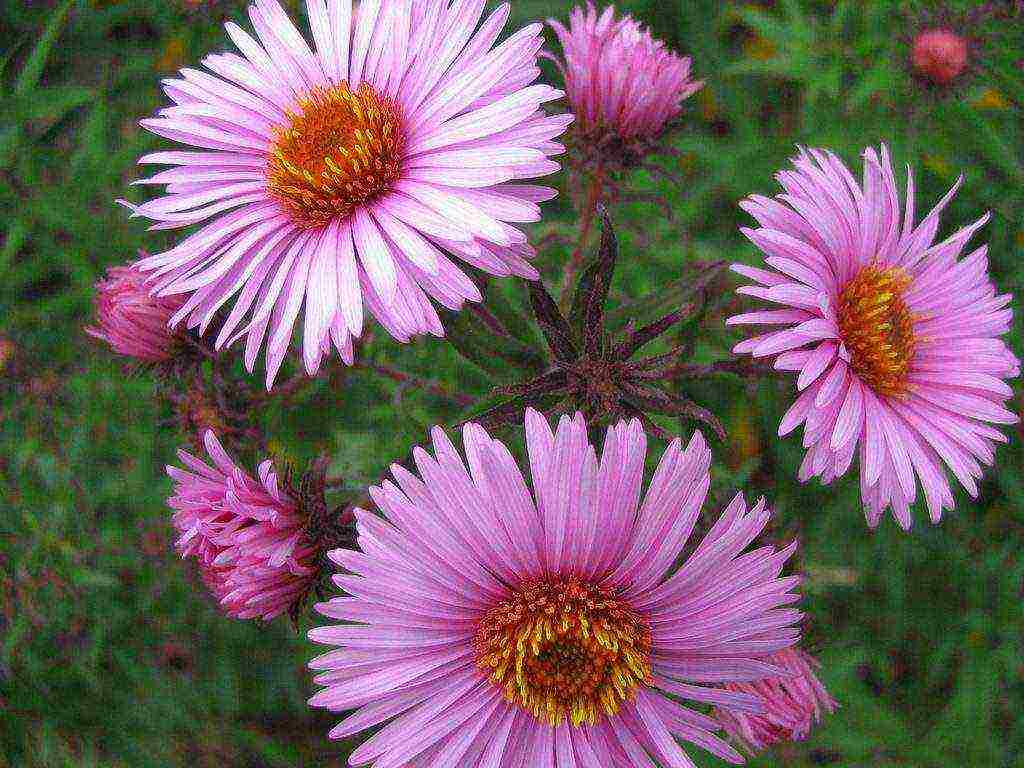
Bright flower bed
In order for perennial flowers to bloom all summer, you need to pick them up according to the flowering calendar:
- May: budra, dicentra, daffodil, peony, aquilegia, iris, hawk, hazel grouse;
- June: cornflower, heuchera, marigolds, bell, lupine, delphinium;
- July: geranium, elecampane, lily, gypsophila, hosta;
- August: phlox, swimsuit, limonium, astilba, St. John's wort;
- September: aster, basil, abelia, dahlia;
- October: Potentilla, Erica, Aconite.
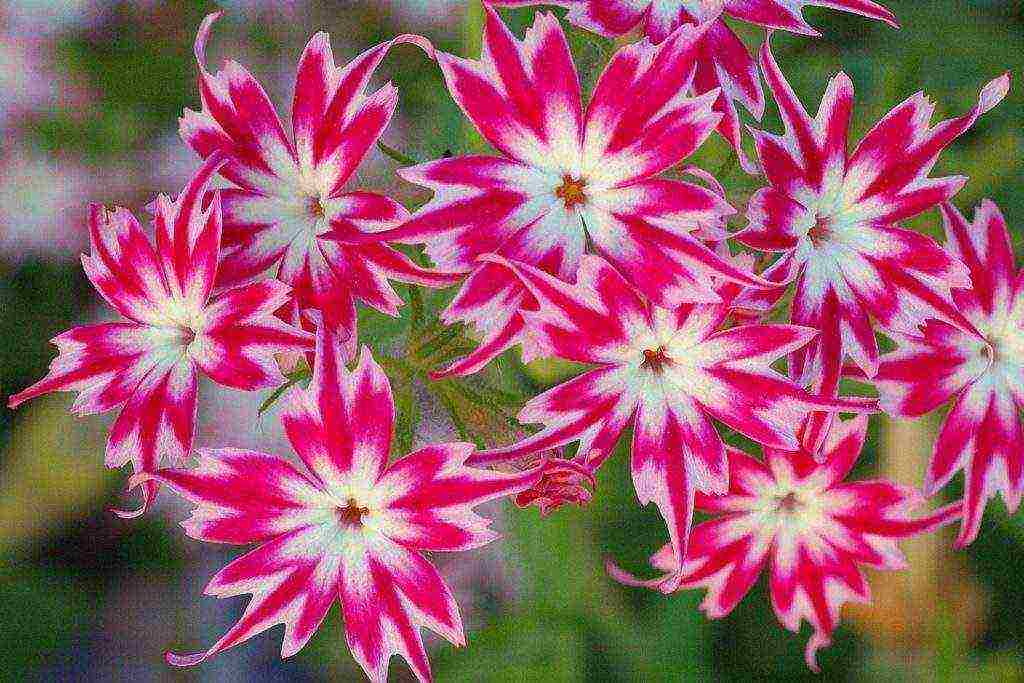
It is not necessary that this or that flower bloom strictly on schedule, it will depend both on the care of it and on the weather, which is not always possible to predict. Basically, the flowering period lasts about a month, plus or minus a week, but there are exceptions, in the form of 2-3 weeks, or vice versa 2-3 months.
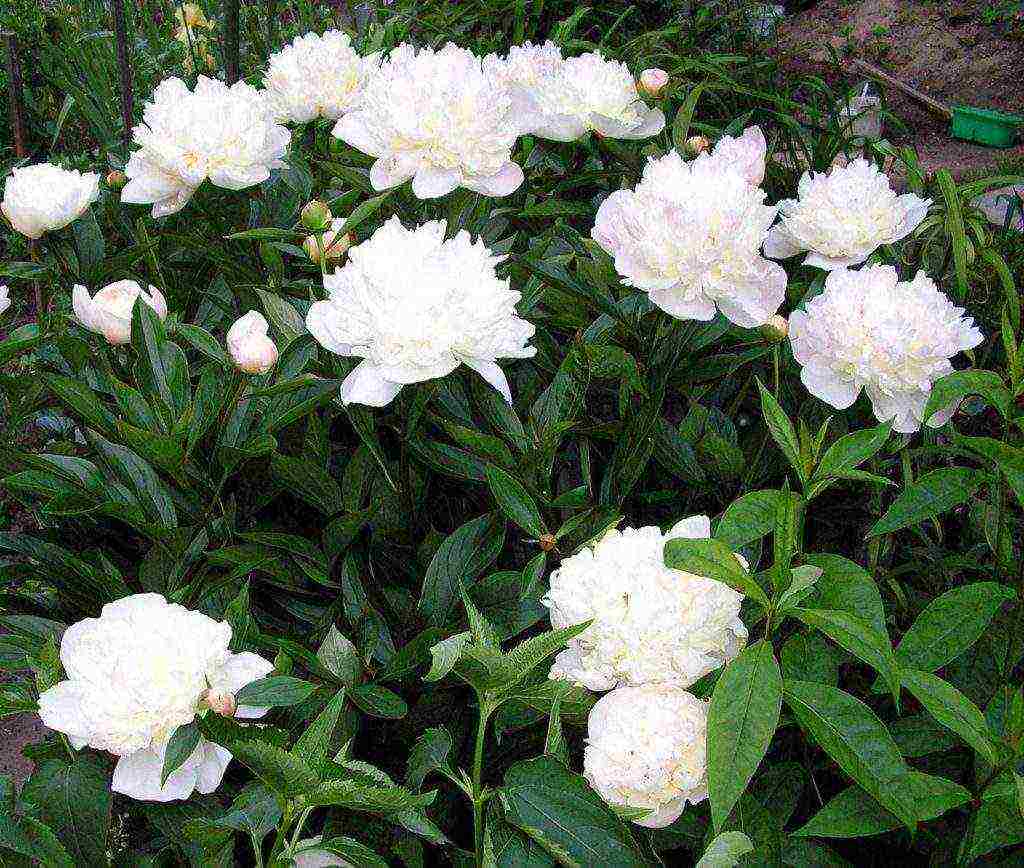
Ornamental plants are classified according to "growth". For example, marigolds (from 35 cm), hosta (45 cm), daffodil (30 cm) are considered low. Of the tall representatives, one can distinguish aquilegia (90 cm), lily (100 cm), aster (140 cm), delphinium (up to 180 cm) and others. This will give the flower bed more variety and uniqueness.
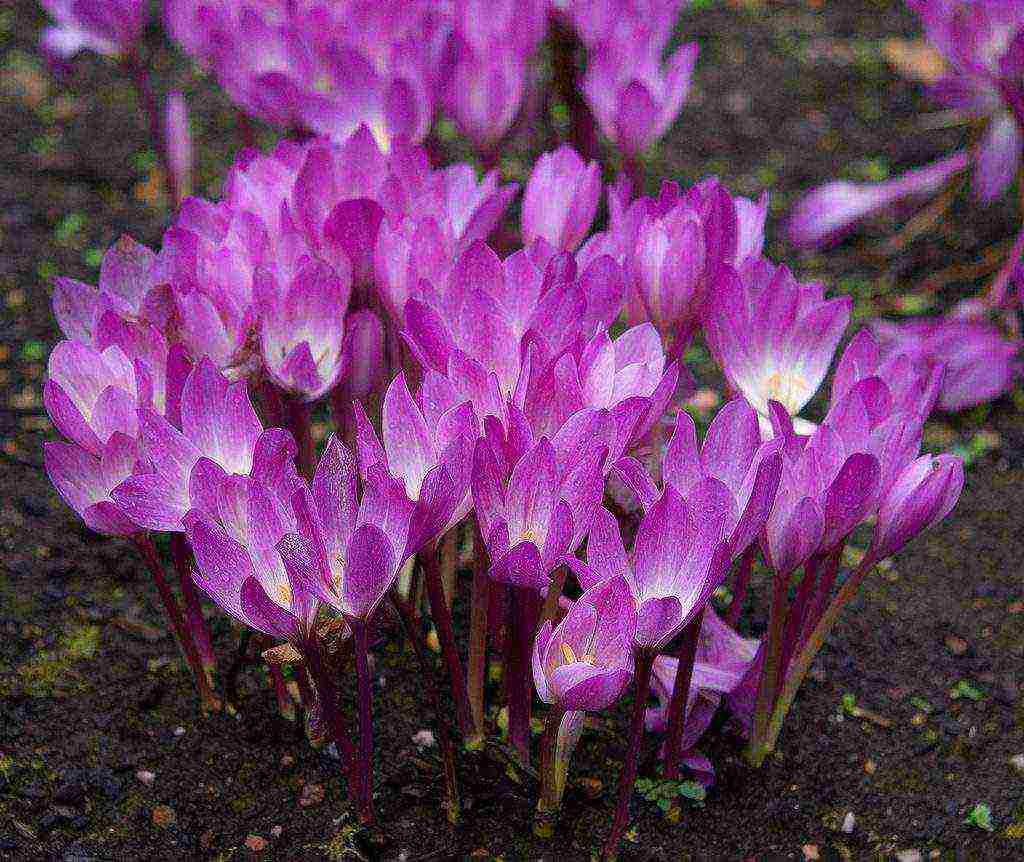
It is not necessary to plant them right in the garden, you can hang them in pots near the house, or create flower beds in a resting place by the bench, which will add a wonderful summer mood.
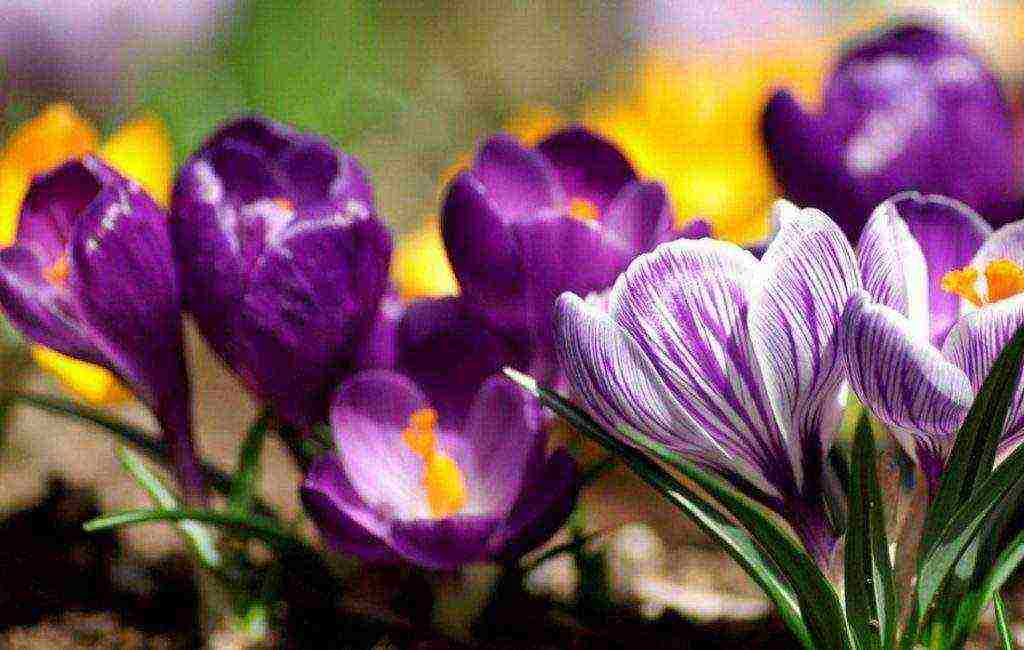
With the help of such a trick, inscriptions or an interesting picture are made on the flower bed. Here you can dream up a lot, make a color transition in tones, or plant it in the form of a rainbow, pick up a palette of your favorite shades.
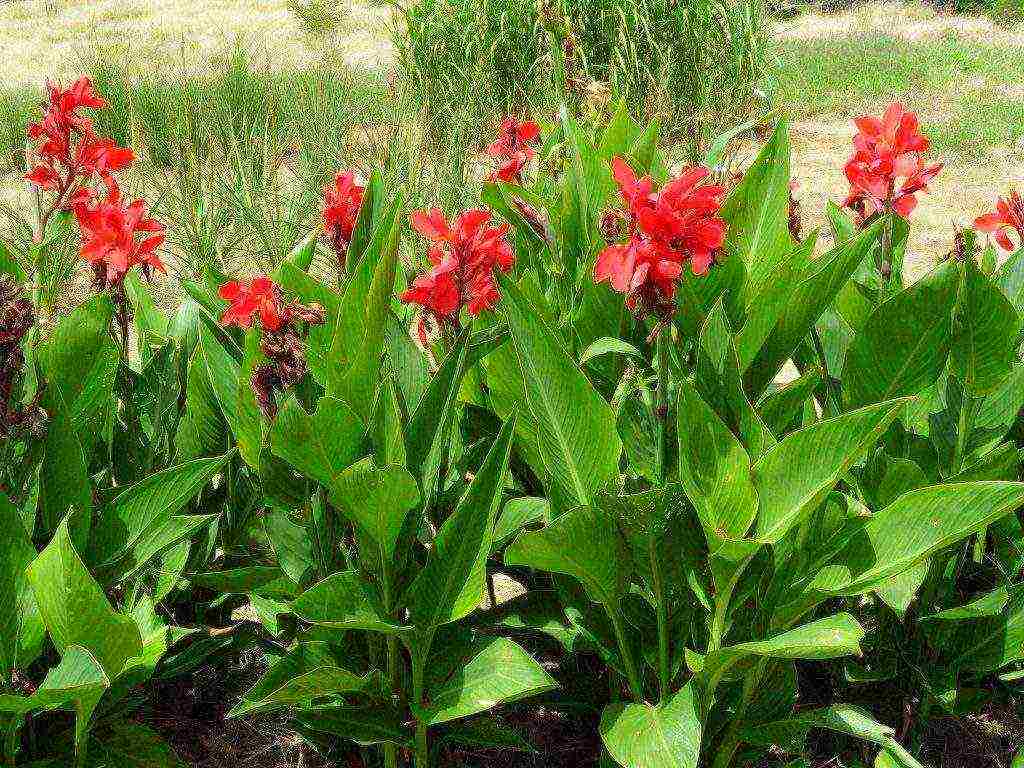
You can take a photo of perennial flowers from your multi-colored, multi-level flower bed, then the fruits of labor will delight not only in summer, but also on cold winter evenings.

In order not to spoil the spring mood, carefully approach the choice of seeds. Give preference to reliable and proven manufacturers that have long won the authority of gardeners - Poland, Holland, Germany. Pay attention to the packaging, it contains the necessary information about the characteristics of the plant, planting, care, storage.
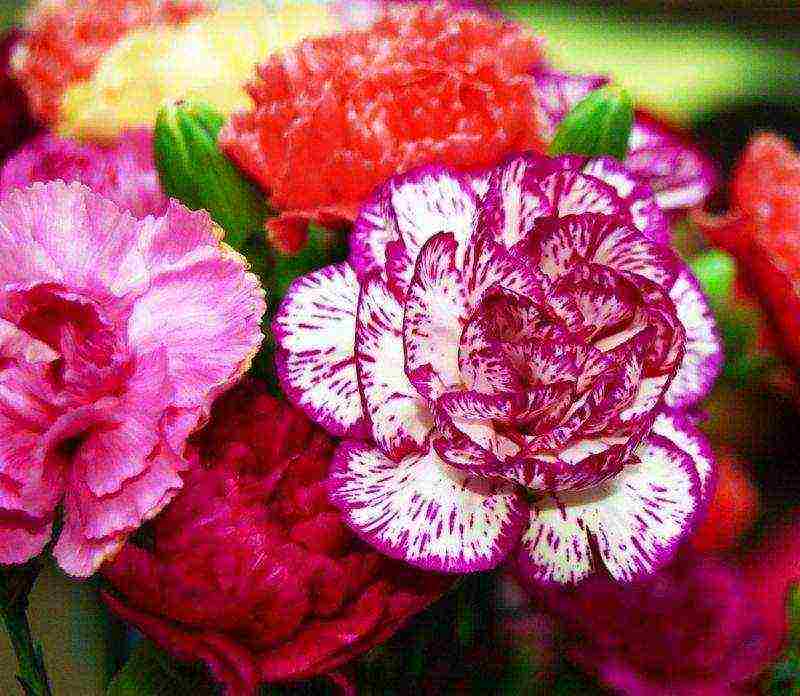
Photo review of perennial flowers from the 2017 catalog
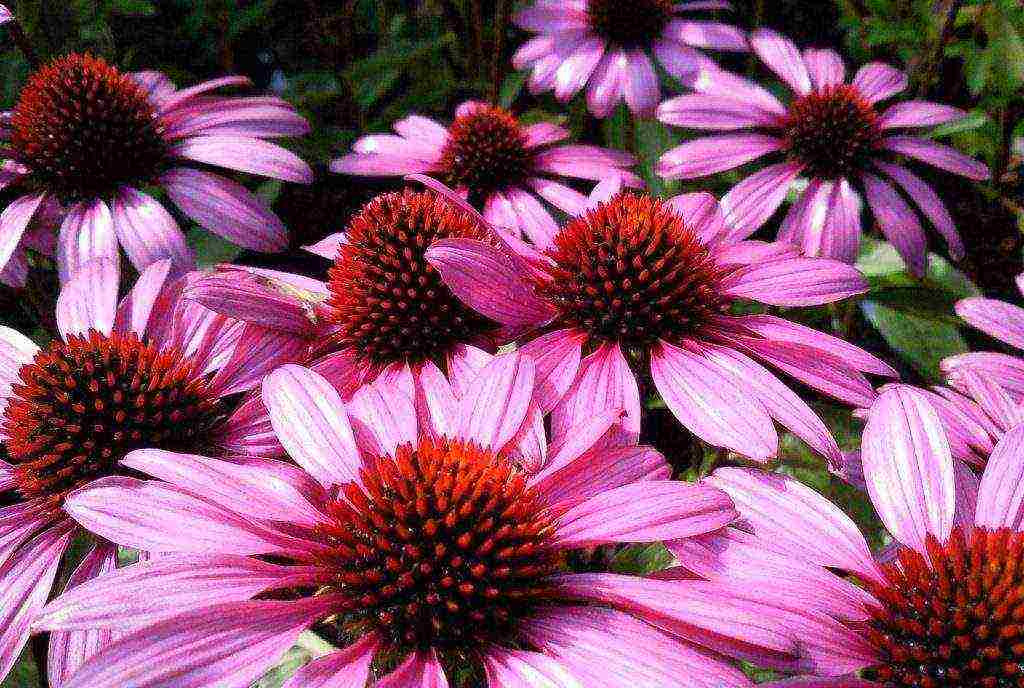

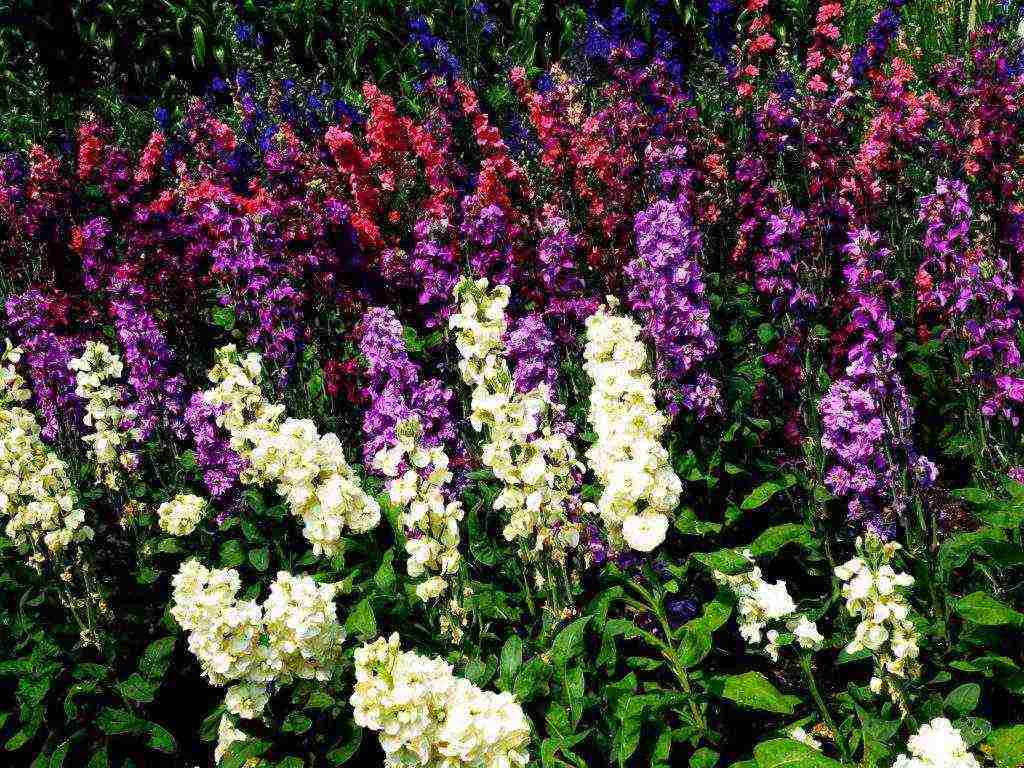

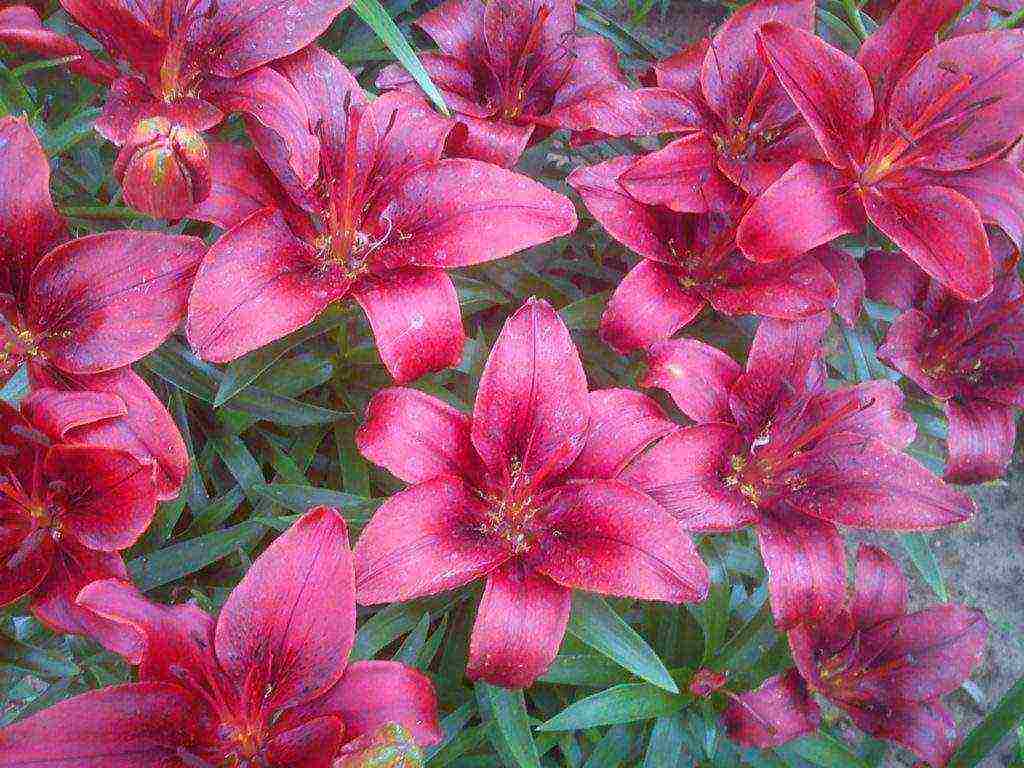
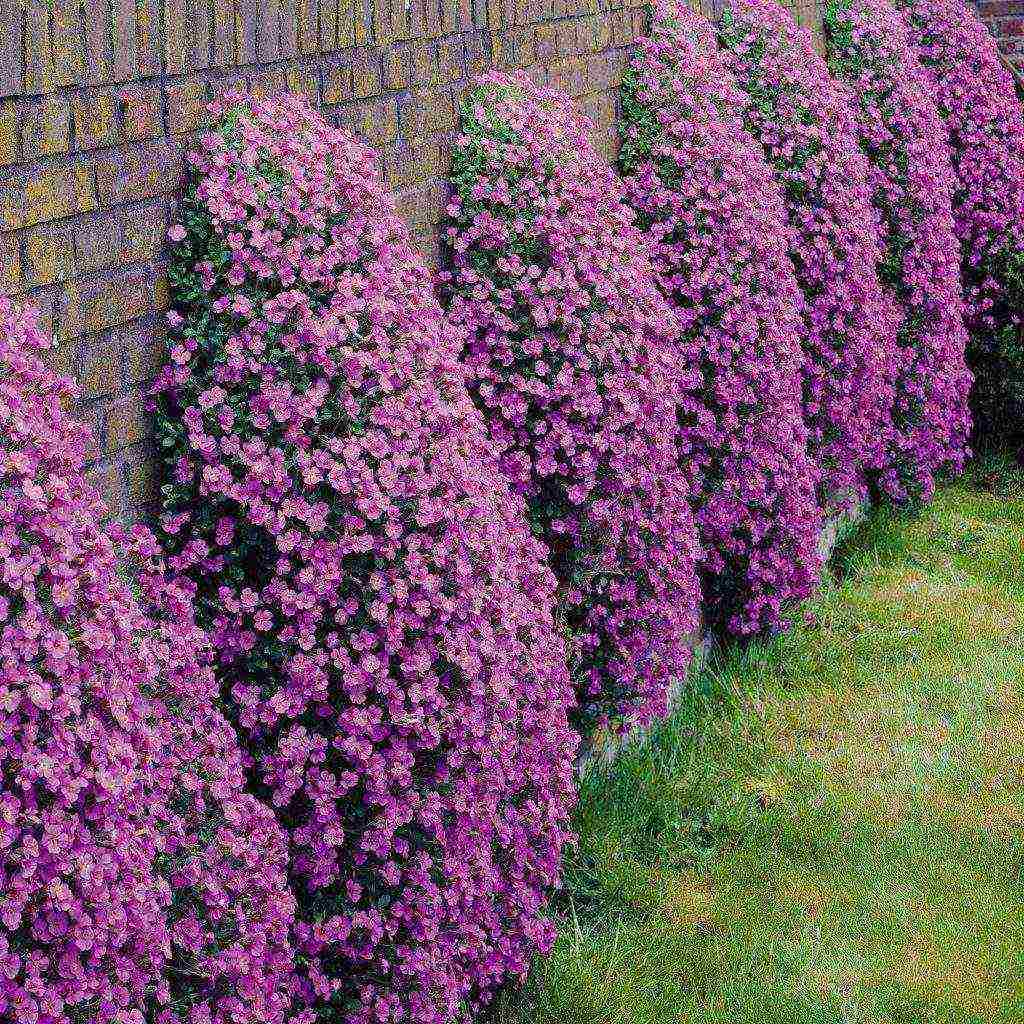
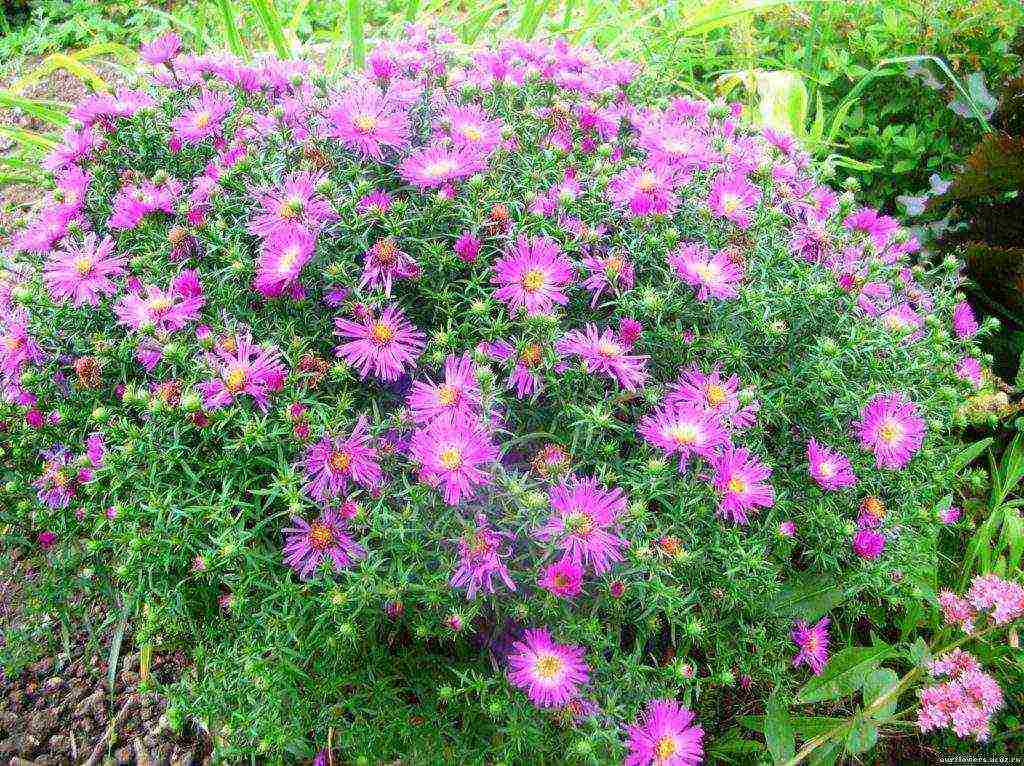
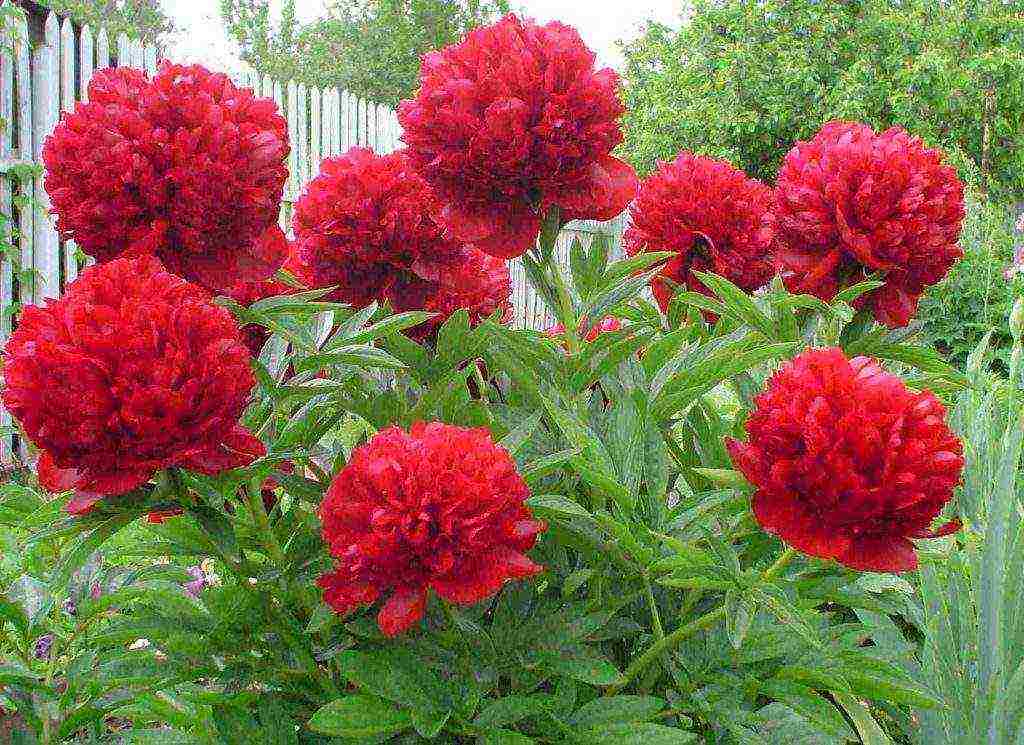

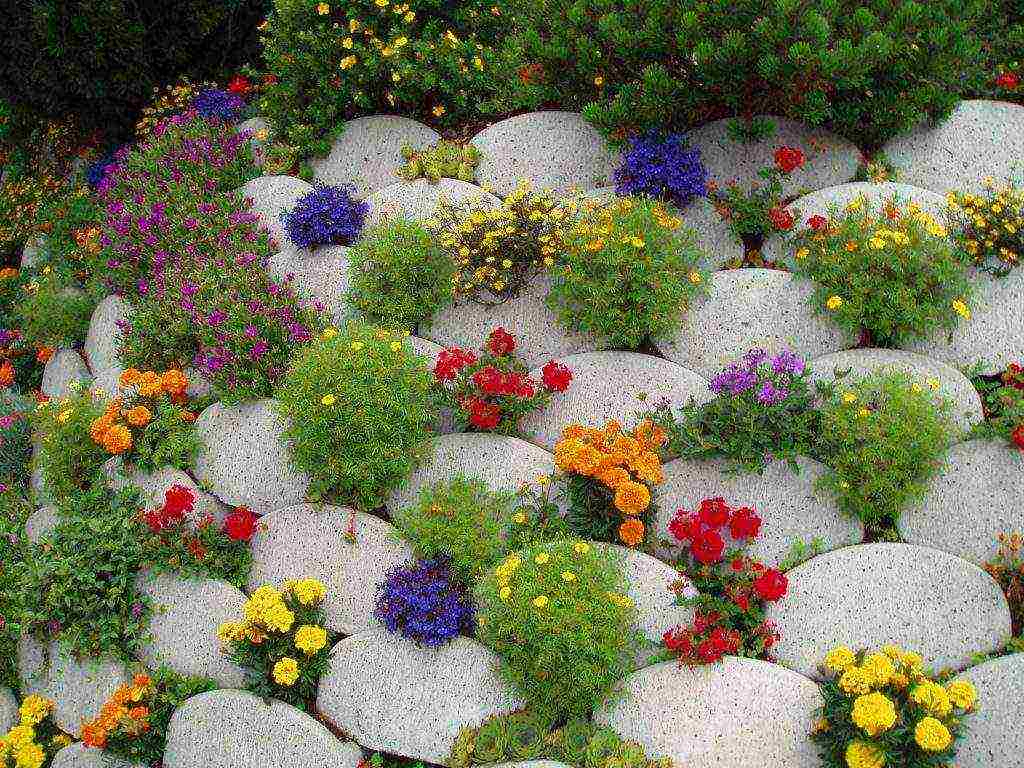
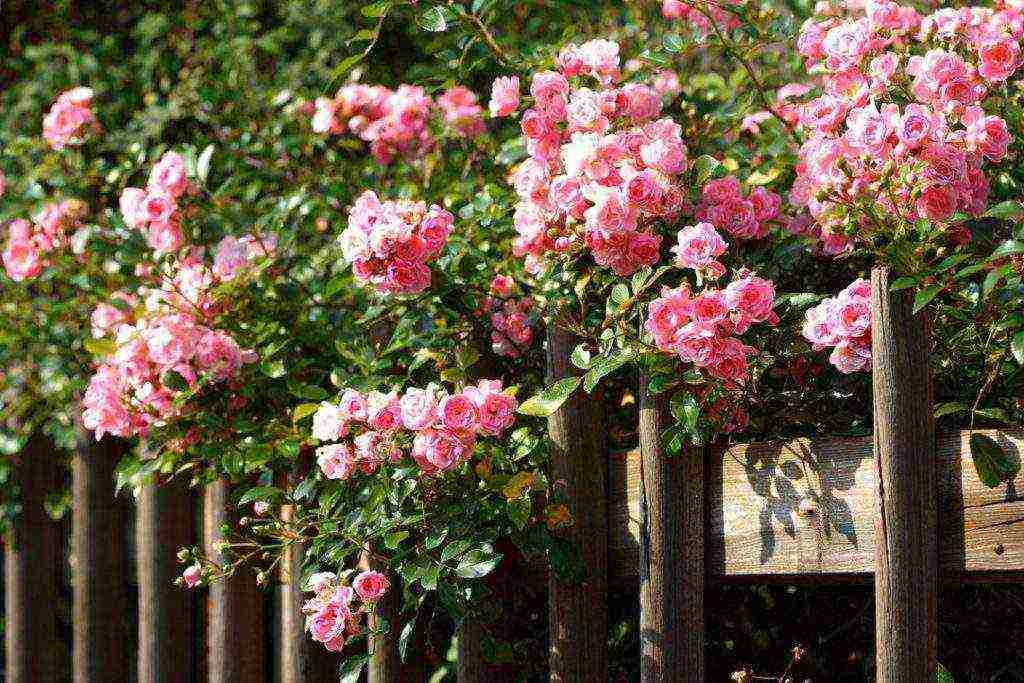

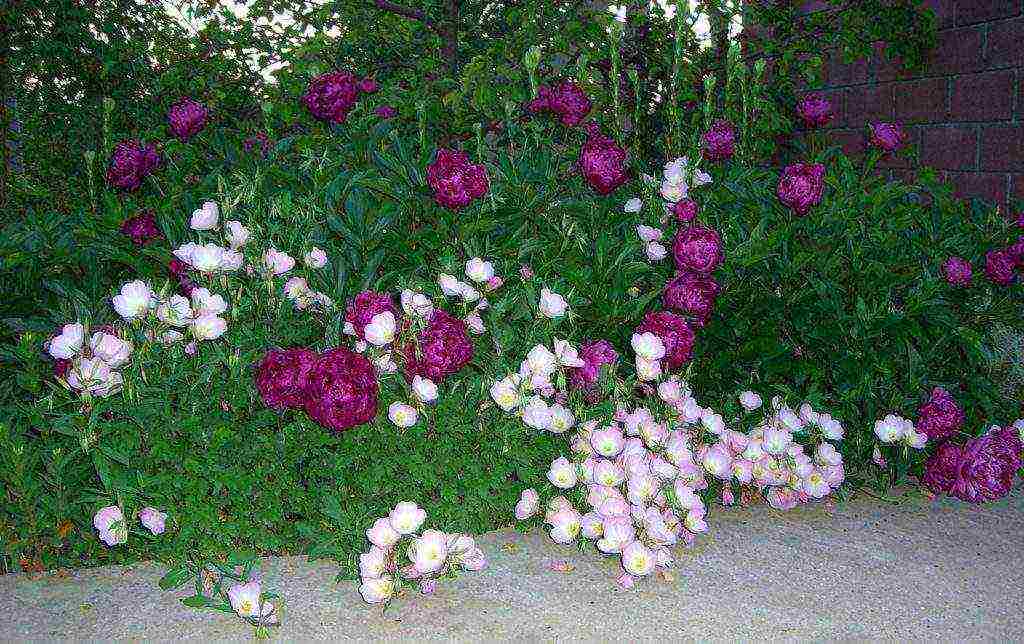
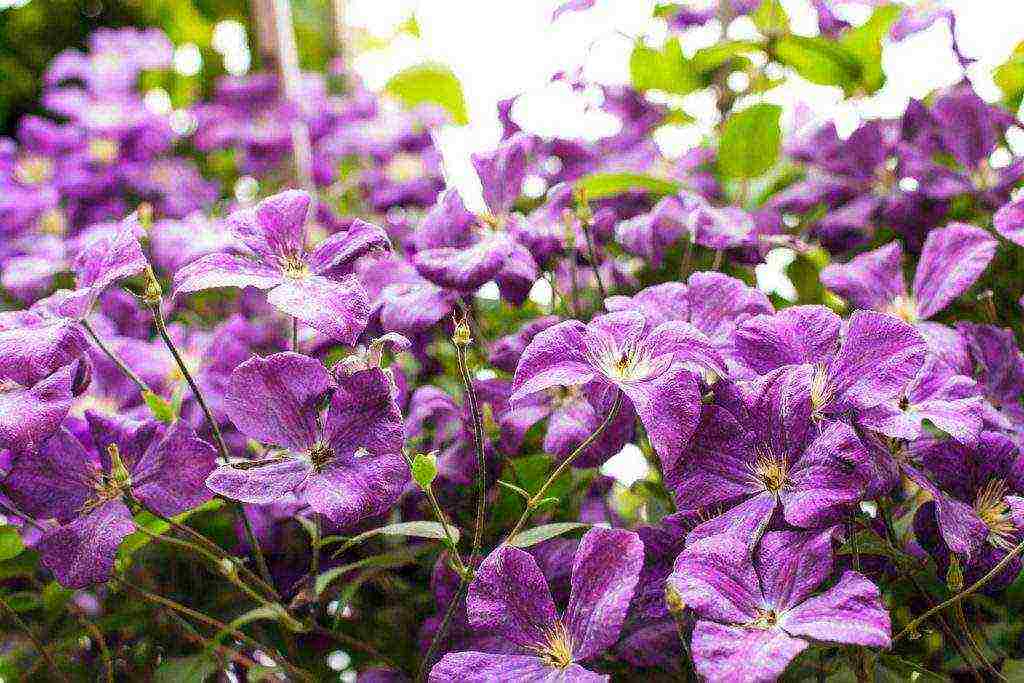
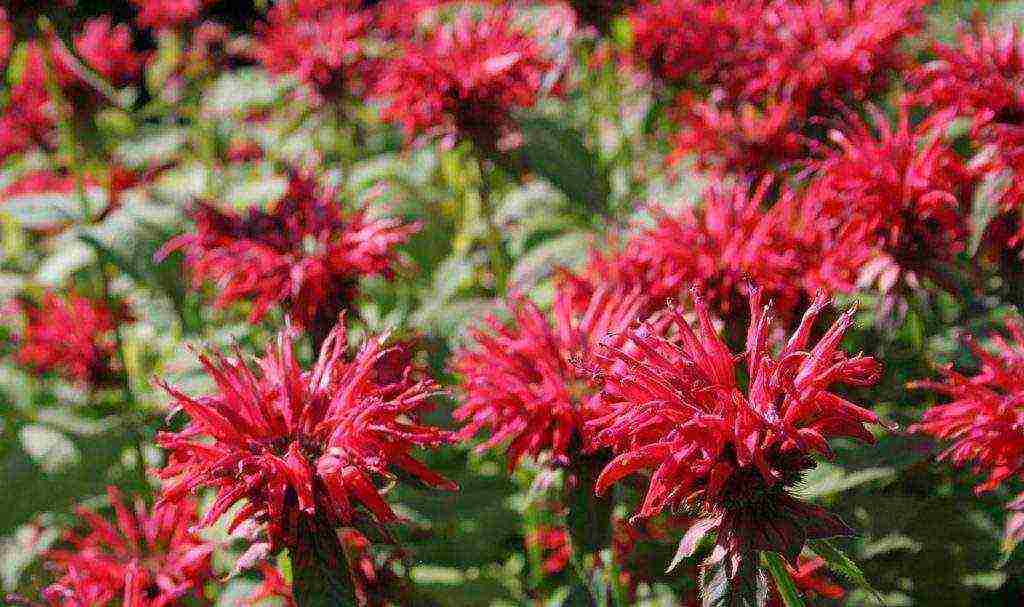
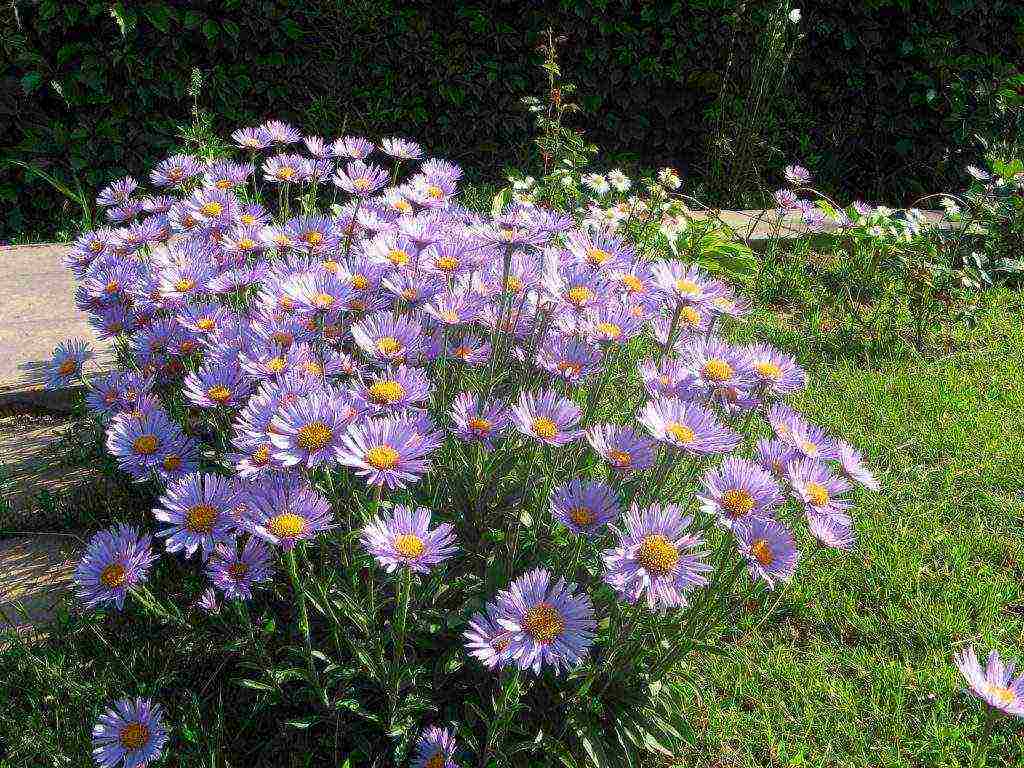
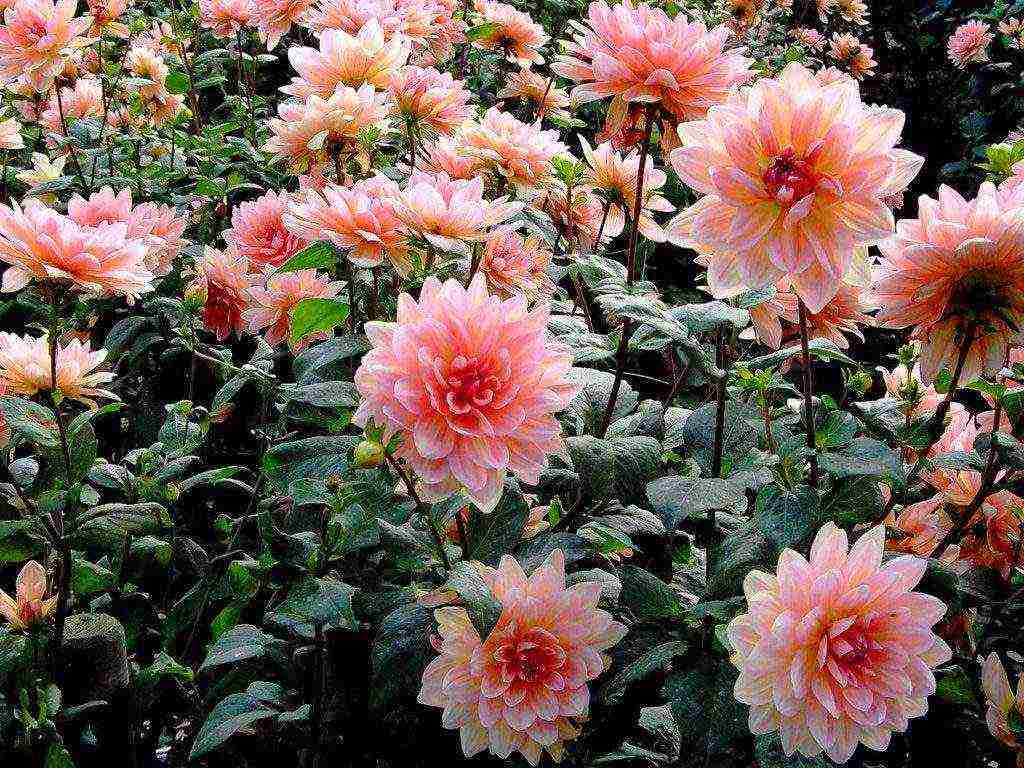


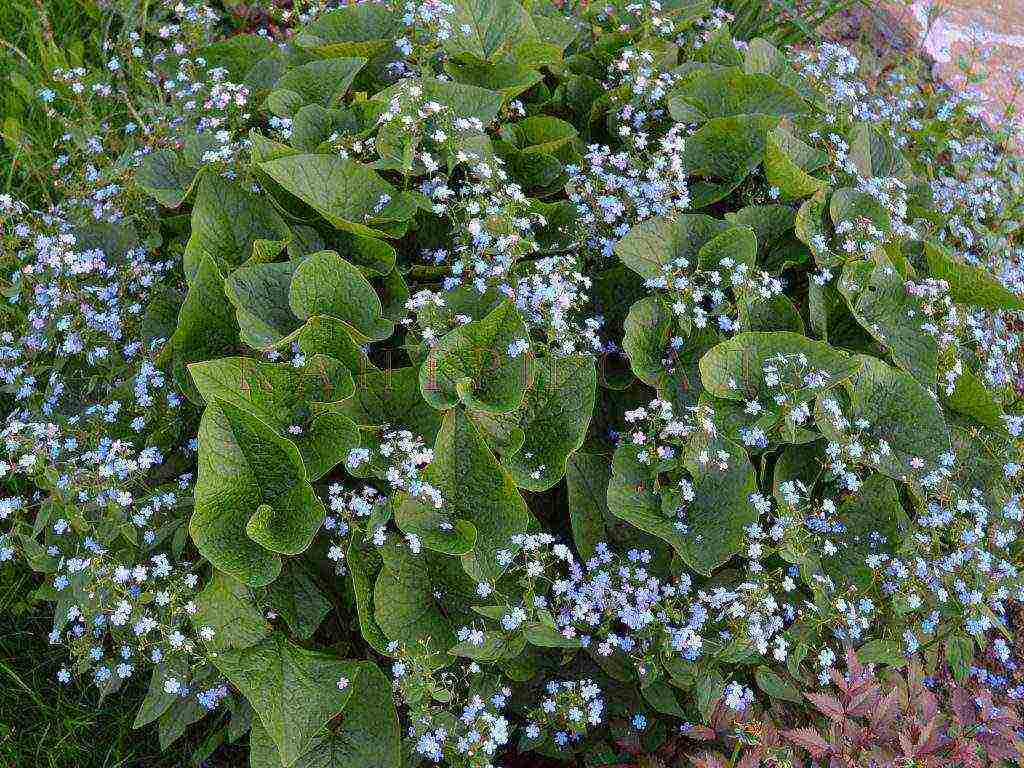


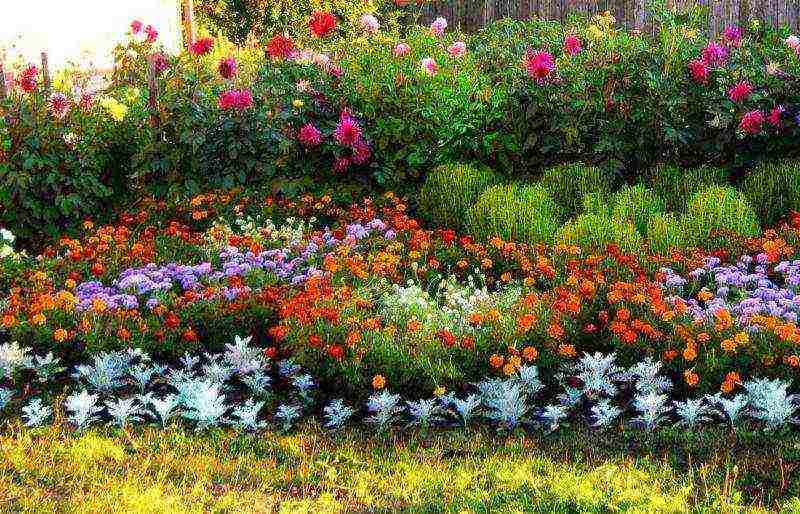
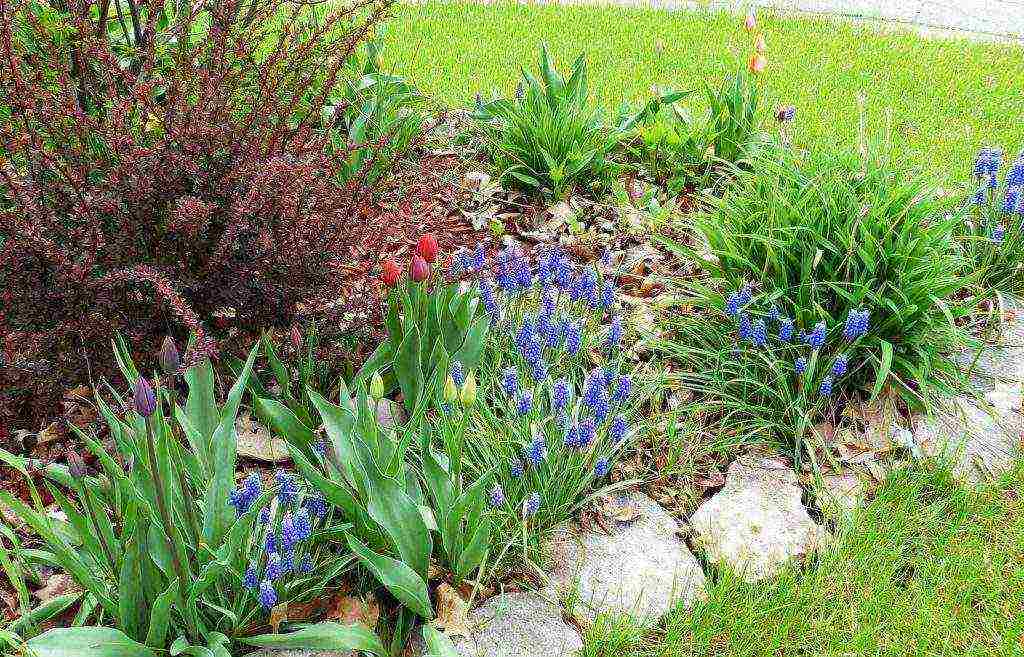
What perennial flowers can be planted along the path so that they do not shade each other. The sun is all day to the left of the path, and in the afternoon there is a small shadow from the apple tree on this section.
The owners of summer cottages are trying to decorate the area near the house as effectively as possible and sometimes create real masterpieces. Today it has become fashionable to decorate flower beds in one color scheme. We offer you 20 of the most popular, unpretentious and spectacular ...
Summer is the time for the lush flowering of most garden plants. Some of them bloom in spring and continue to delight us in summer - decorative onions, Iberis, Oriental poppy, daisies, peonies, thyme, periwinkle, nocturnal (hesperis) ....
Under trees, near fences or at the northern wall of the house, in shady flower beds, ground cover tiarella, waldsteinia, lilies of the valley, alpine mountaineer (Aconogonon alpinum), phlox paniculata (Phlospaniculata), anemone ...
Good afternoon everyone! Tell me, what unpretentious perennials can you decorate a flower bed in a kindergarten? It's just that often from June-July on vacation, there is really no one to take care of for 1.5 months ... Thank you!
Good afternoon everyone! Finally, fragrant lilies and daylilies have bloomed, so I invite everyone to see. I mean, fragrant lilies are already blooming, as Asians and many Asian hybrids have already faded. I love the scent of lilies only in ...
A problem familiar to many: the seedlings ordered in the online store arrived at the place of their future "registration" much later than planned. Or, for some other reason, it was not possible to do everything on time. And we are tormented by questions ... To plant or not to plant? ...
We receive many questions about growing flowers in a harsh climate. Here are two of them: “I live in Novosibirsk. I want to plant perennial flowers in my dacha. She has already planted a lot at her own peril and risk, whether they will overwinter. What do you…
We started our acquaintance with rare bulbous plants with Amaryllis, continued with Iris and Hyacinth, and will conclude with an overview of representatives of three families. Decorative bow - pink tenderness of May, photo by the author Let me remind you that the genus, species ...
We continue with the interesting and useful topic of twin plants. After pairs of conifers were selected (Coniferous twin plants for southern and northern summer cottages), deciduous trees (Southern exotic in northern summer cottages: double deciduous trees), ...
Hello! Please advise what kind of flowers can be planted in long wooden boxes that will stand against the wall of the house in the shade. I want them to grow and multiply quickly and without problems. Desirable perennials that can be sheltered on ...
Express perennials include such flower crops (species, forms, varieties) that bloom faster than usual, often in the first year of life. Lychnis crown can bloom in the year of sowing Most of them are herbaceous species, but there are also ...
Dear, dear, gardeners. Hello! I live in Irkutsk. In summer we have up to 40 degrees of heat, and in winter up to 40 degrees of frost. This is such a harsh climate. Please tell me that you can plant unpretentious, low up to 15-20 cm, long-term, constantly ...
Today we are opening a series of articles devoted to plant rarities, as well as species, forms, varieties that are still not widely spread in summer cottages. We will start acquaintance with them with bulbous and corms. Krinum Moore - ...
Hello! What perennial low-growing flowers in the Siberian climate are better to plant in a flower garden? Thanks to!
A question from our subscriber Olga: I have the following question: is it possible to plant perennials (delphiniums, hellebore, carnation, buzulnik, etc.) with seeds, for example, in April. In order to plant them in August, and will they bloom next year?
Question for Khalilov F.Kh. Good afternoon. Please tell me and list, if possible, what perennial flowers can be planted on the ground in the Rostov (Rostov-on-Don) region. Messy flowers do not grow - they are very dry. We need flowers ...
This year, for the first time, I want to sow perennial seeds before winter: delphinium, lupine, daisy and rudbeckia. However, I read in many sources that when sowing perennials in winter, you should not expect them to bloom next summer, they will bloom years later ...
Flowers are loved by all summer residents without exception. In all honesty, it would be more correct to say, with rare exceptions. Each time, admiring their multicolor and shape, I thank the Creator for such beauty. It used to deliver to me ...
On the calendar August 28 is the Day of the Assumption of the Blessed Virgin Mary. On this day, parishioners of the Cathedral of the Transfiguration of the Lord, which is located next to the Nikitsky Botanical Garden, always bring white lilies and thyme. The flower of the Virgin is considered white ...
This year I had a plan to remember my garden as perennials. I needed one large flower bed, a rose garden, which I already wrote about, an alpine slide and a few more local plantings. To save money and - what a sin to conceal - ...


